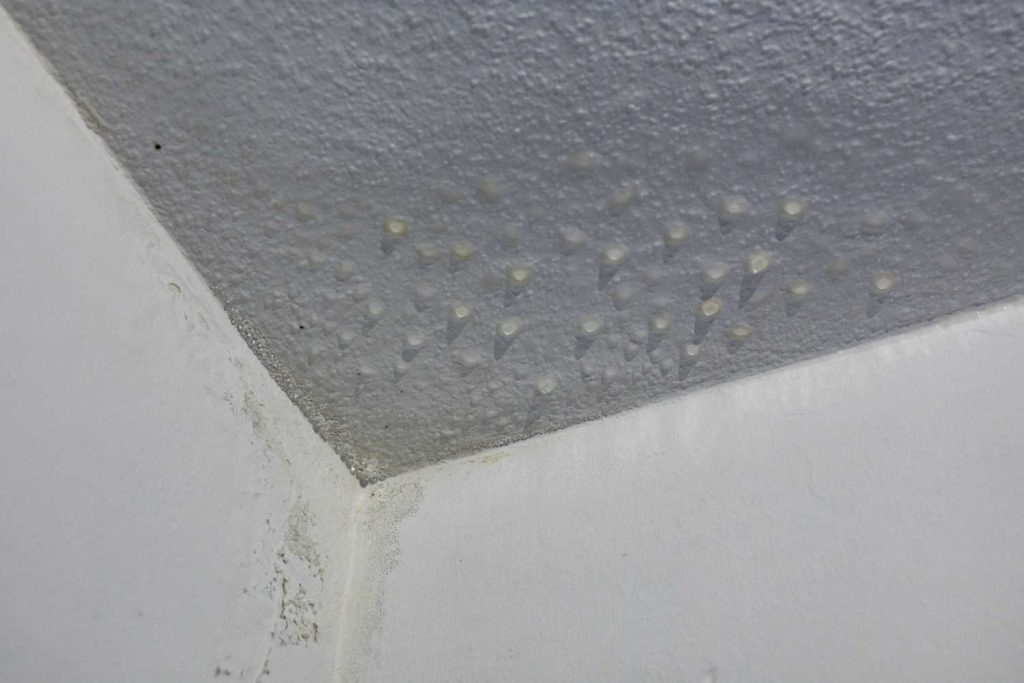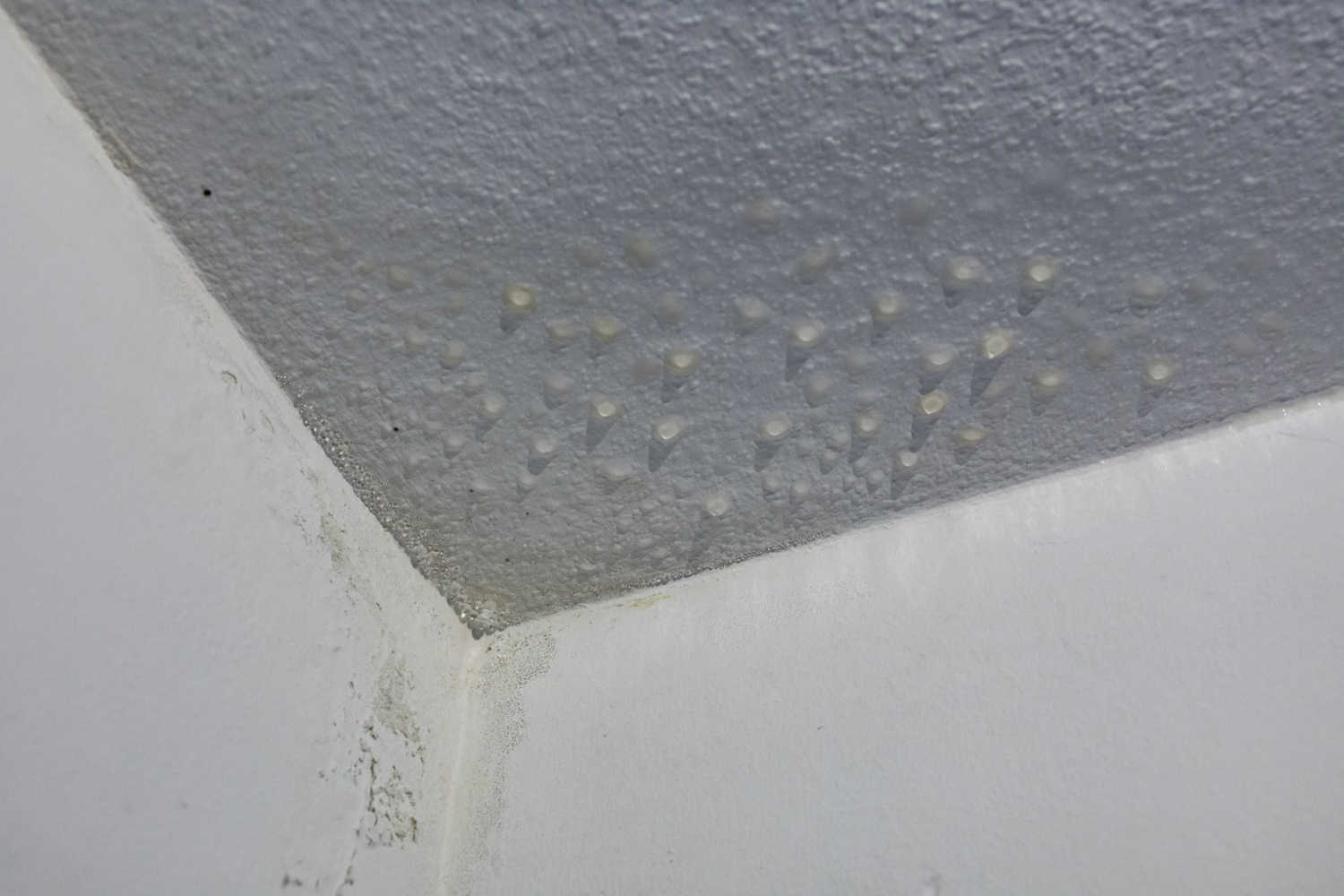Waking up to find condensation on your ceiling can be a perplexing and concerning situation for any homeowner. Condensation on the ceiling is often a sign of excess moisture in your home, and if left unaddressed, it can lead to more significant problems such as mold and structural damage. In this comprehensive guide, we will explore the causes of condensation on the ceiling and provide practical steps to fix the issue effectively.

Understanding Condensation on the Ceiling
Before we delve into the steps to fix condensation on the ceiling, it’s crucial to understand what causes it and why it’s a matter of concern.
Causes of Condensation:
Condensation occurs when warm, moist air comes into contact with a cold surface. In your home, this can happen for several reasons:
- Temperature Differences: When the temperature inside your home is significantly higher than the temperature outside, and there is high humidity, condensation can form on cooler surfaces, such as ceilings and walls.
- Inadequate Ventilation: Poor ventilation can trap moisture inside your home, increasing the likelihood of condensation.
- Lifestyle Factors: Activities such as cooking, bathing, and using humidifiers can introduce moisture into the air, contributing to condensation issues.
Why It’s a Concern:
Condensation on the ceiling can lead to various problems, including:
- Mold Growth: Excess moisture provides an ideal environment for mold to thrive, posing health risks and requiring costly remediation.
- Structural Damage: Over time, condensation can damage the structural integrity of your home, particularly if it leads to wood rot.
- Stains and Paint Damage: Persistent condensation can cause water stains on your ceiling and compromise the integrity of the paint or finish.
Read too: Is R13 Insulation Good For Ceilings
Step 1: Identify the Source of Condensation
The first step in addressing condensation on the ceiling is to identify the source of the excess moisture. Consider the following factors:
- Check for any plumbing leaks that might be contributing to humidity levels.
- Assess the effectiveness of your home’s ventilation systems, including exhaust fans in bathrooms and kitchens.
- Consider your lifestyle habits, such as cooking without proper ventilation or using humidifiers excessively.
Step 2: Improve Ventilation
One of the most effective ways to combat condensation is to improve ventilation in your home. Here’s how:
- Use exhaust fans in bathrooms and kitchens to remove excess moisture.
- Ensure that your home’s ventilation systems are functioning correctly.
- Open windows and doors periodically to allow fresh air to circulate.
- Consider using a dehumidifier to reduce indoor humidity levels.
Step 3: Proper Insulation
In some cases, inadequate insulation can lead to temperature differences that result in condensation. Ensure your home is properly insulated, particularly in areas where condensation is a recurrent issue.
Step 4: Monitor Humidity Levels
It’s essential to monitor and control the humidity levels in your home. You can do this by:
- Using a hygrometer to measure indoor humidity levels.
- Setting your thermostat to maintain consistent indoor temperatures.
- Using a humidistat to control humidity levels in your home.
Step 5: Address Leaks and Repairs
If you find that condensation is due to leaks or other structural issues, it’s crucial to address these problems promptly. This may involve fixing plumbing leaks, repairing damaged insulation, or resealing windows and doors.
Conclusion
Condensation on the ceiling can be a frustrating issue, but with the right steps and preventative measures, it can be effectively managed. By identifying the source of excess moisture, improving ventilation, properly insulating your home, monitoring humidity levels, and addressing any necessary repairs, you can reduce or eliminate condensation and its associated problems. Remember that persistent condensation can lead to more significant issues, so taking action promptly is key to maintaining a healthy and well-maintained home.
